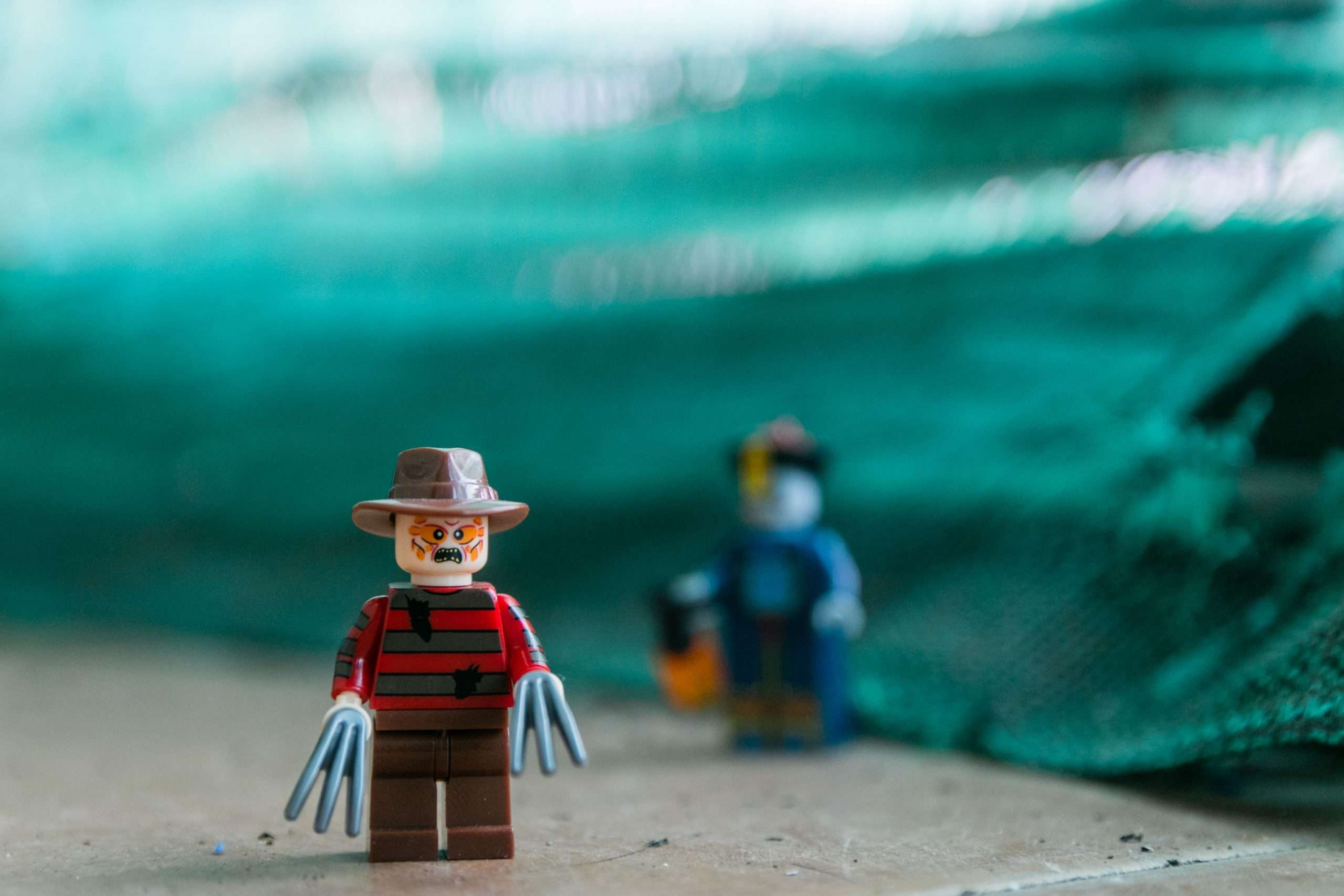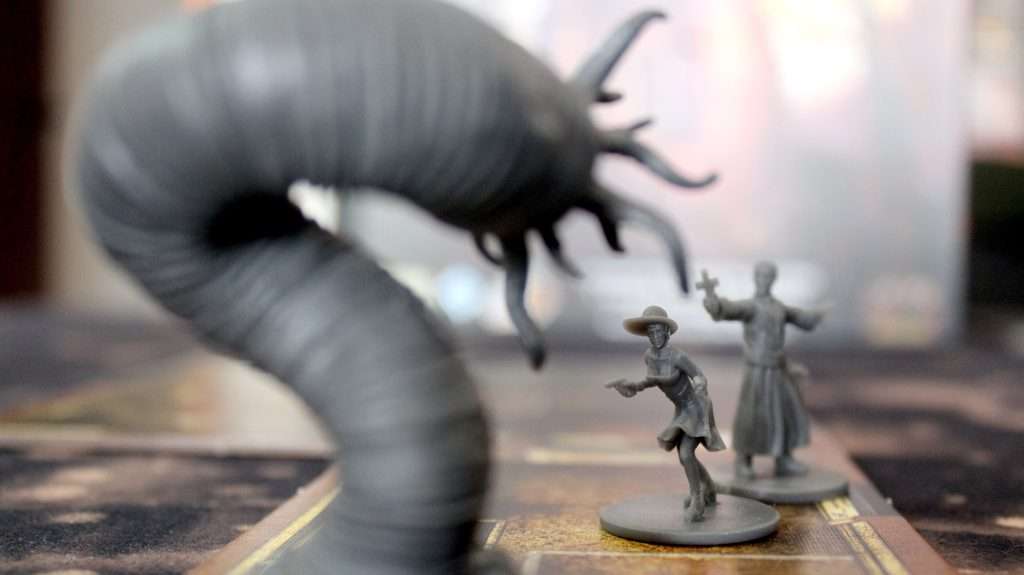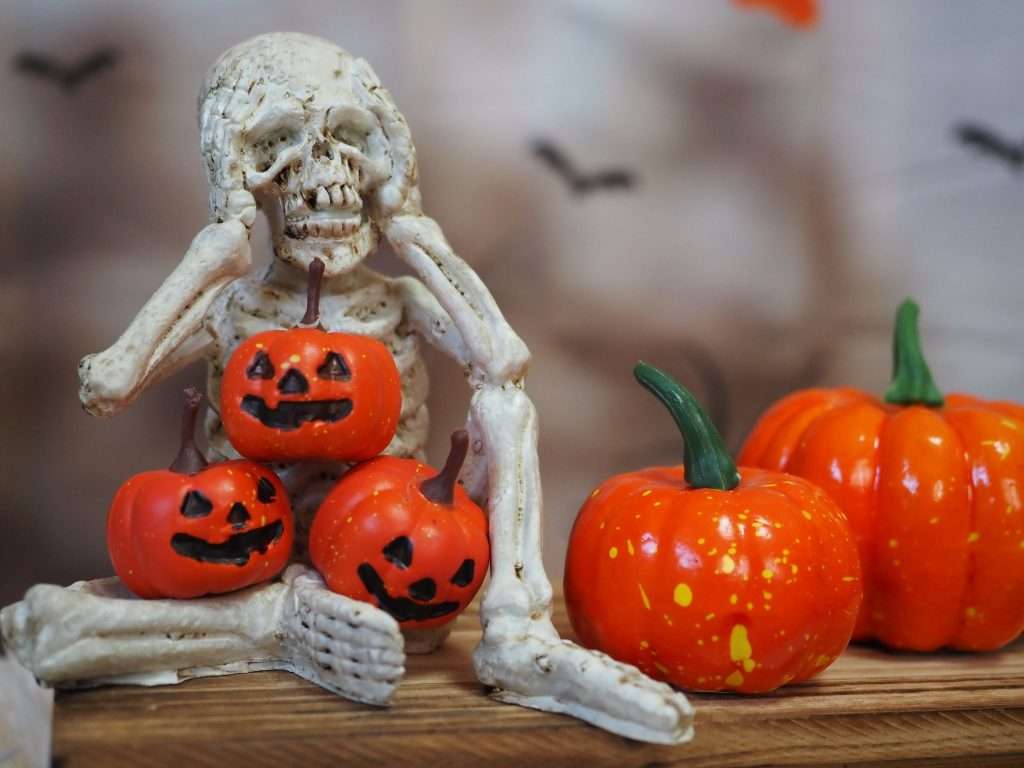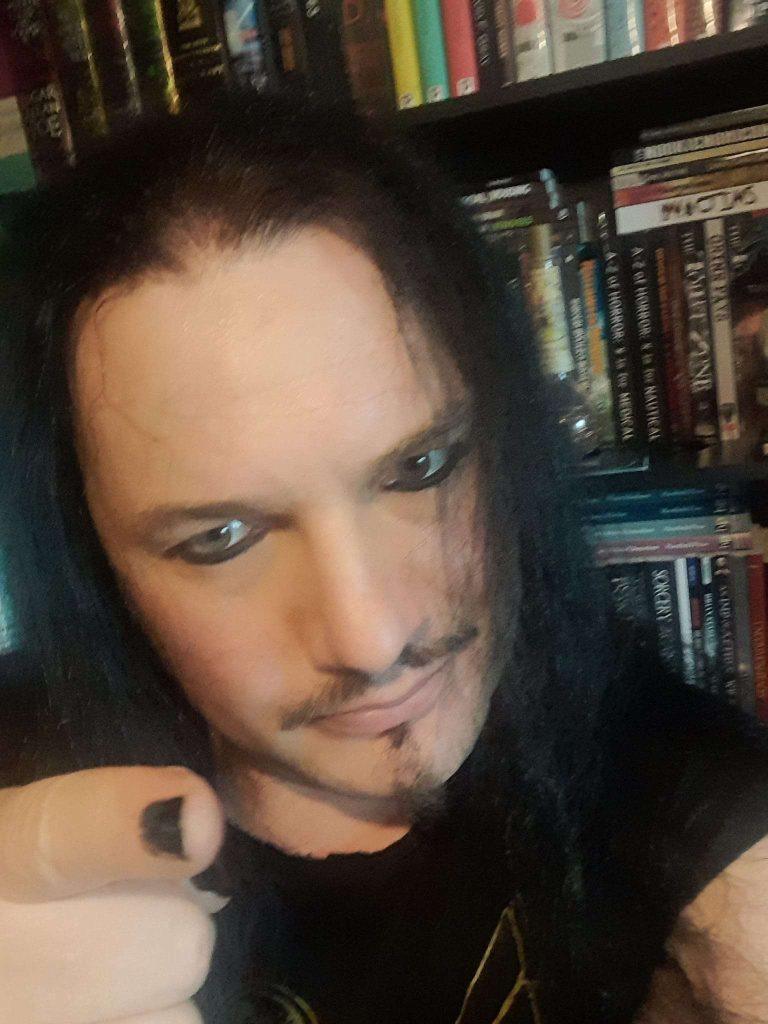We’ve implemented some new protocols around sending us messages via this website. Please email website “at” britishfantasysociety “dot” org for any issues.

For all things fantasy, horror, and speculative fiction
-
Announcement:

Carry on Screaming: Comedy in Horror
Self-confessed “odd chap” Tim Mendees, fresh off the success of organising the Innsmouth Literary Festival, waxes lyrical for us on how the scary can actually be funny, too.

Picture the scene. You are sitting alone in a darkened room watching a horror movie. All is silent save for the ragged breathing of the actor and a low ambient hum on the soundtrack. The hapless fool that has wandered into the wrong place at the wrong time, is edging slowly down a narrow corridor lit only by a dim shaft of moonlight filtered through a grime-encrusted pane of glass. You know it’s coming, all the red flags are on display and the hairs on the back of your neck are standing erect in anticipation. A jump-scare is so obviously about to happen that you can practically see the string section readying their bows for the sting. Despite this, it still gets you, a handful of cheap supermarket popcorn gets launched towards the ceiling and a noise akin to a startled warthog escapes your lips. What’s the first thing you do when you have caught your breath and, perhaps, spat out a stream of invective? You laugh… every time. Something about feeling foolish triggers the inbuilt survival mechanism that is humour.
On many occasions throughout my life, I have heard people say, “if I didn’t laugh, I’d cry,” when experiencing the day from Hell. I may have said it a few times myself over the decades. There seems to be something hard-wired into our psyche that makes us break out the bad puns and self-deprecating jibes whenever stress reaches critical levels. I like to think of it as a natural safety valve that releases pressure before our heads explode. It’s the same with physical pain, you hit your thumb with a hammer and the first thing you do is make a joke out of it. Taking this to its natural conclusion, it’s no wonder that gallows humour is such a well-known concept. This is why, to my mind, comedy and horror go hand in claw.
Like the sticky red fluid that seeps to the surface after the lusty puncture of a vampire’s fang, humour is often hiding below the skin. Scratch that surface, however, and you will find it. I’m honestly hard-pressed to think of a single horror story without a single amusing moment. Even scholarly types such as M.R. James took the time between creeping the life out of his readers to take less-than-subtle jabs at those who wasted their valuable time playing golf, a sport that he had no love for. Before we begin to look at authors, such as myself, who lean into the comedic and absurd, it is important to point out that most serious horror writers will have a comic relief moment or three. If you were to look at storytelling as a waveform, you would see that it needs peaks and troughs, especially in anything longer than a short story.

If the horror is constant, it risks inviting the law of diminishing returns, it becomes one-note and a slog to get through. The reader needs a break from time to time or the horror loses its impact—and comedy, along with other character-heavy sequences, is a great way of doing this.
Comedy can serve to heighten the horror
A good example of comedy lurking beneath the surface is the collected works of the so-called Lovecraft Circle, a group of writers that fed the pulp magazines of the early twentieth century with ground-breaking weird fiction and cosmic horror yarns that influence everything from books to TV and video games to this very day. For a genre of horror fiction based around existential dread and the feeling of insignificance on a cosmic scale, Lovecraftian horror is far more playful than you would expect. The early stories are peppered with in-jokes and Easter eggs that are there for no other reason than to give themselves, and the observant reader, a good chuckle. Lovecraft gave each of his correspondents a tongue-in-cheek nickname that he would then use in his stories. Frank Bellknap Long became Francis Chimesleep Short, Clark Ashton Smith became the Atlantean high priest Klarkash-Ton, and Robert E Howard became Two-Gun Bob, and so on. These pseudonyms would go on to be the creators of mythos tomes and the like.
Of this group, Clark Ashton Smith is a great example of using comedy in serious works. In his dark, disturbing, and often downright cruel narratives of otherworldly terrors and crazed necromancers, there is often an undercurrent of satire where he takes well-placed shots at everything from society in general to editors who have cheesed him off. It is these sardonic moments that breathe a little bit of life into his characters, who are often merely cyphers for the reader. Take The Tale of Satampra Zeiros, for instance: his characters are a pair of absolute drunken buffoons blundering into a terrifying situation with dire consequences. I honestly don’t think that the story would be nearly as effective if the protagonists were po-faced heroic types. Because they were the kind of oafs that I would happily go down the pub for a few jars with, I was invested in their survival.
The same could be said for a lot of Stephen King’s characters. Many of his best-loved creations are flawed, funny, and more relatable because of it—they are, in a word, human. When something awful happens to one of these likeable characters, it is more impactful because of it. In this way, the comedy has served to heighten the horror.

A lot of Clark Ashton Smith’s work could fall into the category of Conte Cruel, a type of story with a nasty climax that examines the irony of fate. This type of story often has an element of gallows humour that is hard to ignore. In many cases, the protagonist is a bounder of the highest order so when they meet their messy end it is usually accompanied by cheers. I see them as being not a million miles away from the smoking boots in a cartoon or the arms sticking out from under an ACME weight. Take Smith’s story, “Death is an Elephant,” where a despotic ruler is trampled by the very elephant he used to execute a duplicitous lover. I can’t read it without hearing the comedy squish sound effect. Literature, as well as TV and film, is crammed full of examples of the bad guy getting his comeuppance in a humorous, and cathartic, way. I think it’s a way of signalling to the reader that this is one death that is perfectly fine to enjoy. You should be upset about the other ones, but this…
A panicked fight for survival can be hilarious
By the same token, I fully believe that comedy can add an element of authenticity and sympathy to a character or situation that would otherwise be lost. Think about it: if you were to spend an afternoon sitting in a town centre cafe doing some people watching, you would quickly witness several moments or incidents that would make you chuckle. People do and say the funniest things, often in a time of stress or anger. After all, if some slimy tentacled abomination popped out of your toilet, you wouldn’t say “oh, golly gosh,” would you? No, you’d get creative with the profanity while pelting the slimy menace with toilet rolls and battering it with a bog brush. To an outside observer, your panicked fight for survival would be absurdly hilarious. People are, by their very nature, faintly ridiculous creatures. Cracking jokes and cocking things up is natural. It is probably because of this that I have a hard time believing the traditional perfect hero trope. Could you imagine what an insufferable bore one of those characters would be down the pub at the end of a hard day?
One of the key elements in a horror story is the unexpected, whether that be a madman jumping out of a wardrobe or a squid-thing flying out of a tap. If the reader can see something coming, it loses its impact. The same could be said for comedy. The unexpected can be both hilarious and terrifying. A nice illustration of this happened at Conversation 2023 when I was, ironically, moderating the panel on comedy in speculative fiction. Around halfway through, there was a colossal crash from the dining room next door followed by a moment of stunned silence. It is natural to leap to the worst-case scenario and I was hurriedly trying to remember my first aid training. In a lengthy heartbeat, it was followed by a heavy sigh and a bitter curse… and the room erupted into fits of laughter. When I heard that expletive, it came as a blessed relief. It was also perfectly timed to give us enough pause to worry; it couldn’t have been set up any better on a sitcom. That evening, whoever dropped that tray of cutlery was a comic genius.
How to use humour to enhance, not detract from, the terror

When I first started to submit my stories to myriad publishers, I never intended them to fall into the comedy bracket. It just sort of happened by some weird osmosis. As you may have guessed from the title of this article, I am something of a fan of Carry On… films, and classic British comedy in general. I am also a big fan of P.G. Wodehouse. Because of this, my characters, even in my allegedly serious works, have moments that wouldn’t be out of place in a 1970s situation comedy or a Jeeves story. When a reviewer called one of my novellas “the lovechild of Lovecraft and Wodehouse,” I was over the moon. I’m still unsure whether it was a compliment, but that’s the way I took it. After that, I decided not to skimp on the laughs, and while I class my work as horror first and foremost, there is almost always a comedic element. From here, I got thinking about ways I could use humour as a way to enhance, rather than detract from, the terror.
A while ago I ended up down one of those rabbit holes that writers frequently descend. I had seen an article about using breathing techniques to manipulate the reader and create the literary equivalent of a Hollywood jump-scare. According to research, even if you are reading silently, your breathing behaves as if you are reading aloud. To trigger the fight or flight instinct, it is possible to use sentence length to mess with the reader’s breathing patterns. Long sentences make you hold your breath and shorter ones make you hyperventilate. The best example of this being done well is in Shirley Jackson’s The Haunting of Hill House. Jackson famously uses long sentences, one clocking in at a whopping ninety-two words, to get the reader to hold their breath before unleashing the short sentences and fragments in a staccato rhythm when things go south. It is dizzyingly effective, and it got me thinking about using comedic passages to similarly wrong-foot the reader. If you are chuckling one second and holding your breath the next it can mess with your breathing and get the adrenaline flowing. If you combine this with the gut punch of body horror or the deflation that occurs when you kill a beloved character, you can be onto a winner. It’s all about taking the reader on an emotional roller-coaster.
A scene in the classic horror comedy Shaun of the Dead provides us with a great example of what I’m driving at. Towards the end of the movie, the survivors of a very British zombie apocalypse are holed up in their local pub. As is always the way, someone messes up and the shambling dead start to get in. As a fight ensues, the jukebox starts to blare out Queen’s hit, Don’t Stop Me Now. What follows is a minute of slapstick that wouldn’t be out of place in The Three Stooges. Then… the music stops. As the score swells, the tone shifts in an instant. It goes from laughs to screams in a second as things go rapidly downhill. It’s masterfully done. The shift doesn’t come across as jarring but because you go from one thing to the other so quickly, your emotions are reeling. It’s this effect that I try to achieve in my own work.
This brings me neatly to my final point. The scene mentioned above most definitely works. Not all comedy in horror does. Both are subjective and what one person finds funny or scary, another will just roll their eyes at. When you are dealing with two subjective factors, the risk of falling flat is doubled. Getting comedy in horror right is not an easy thing to do. Where it can enhance and wrong-foot, it can also detract and dilute. It’s a fine line and one that I know I have stumbled over more than a few times. I think this is why we don’t see as much comedy in horror literature as we do in other mediums. By our very nature, writers are perfectionists and the time spent agonising over whether people will find your joke funny is time that could be better spent elsewhere. It’s a gamble that doesn’t always pay off, but when it does…
Not everyone has the same sense of humour, but there will be someone out there who gets it. When I first came up with the idea for The Nookienomicon, a Cthulhu Mythos anthology styled after bawdy British comedy, I had two major worries. First, that nobody would want to be a part of it; and second, that nobody would want to read it. I’m constantly delighted that I was wrong to fret on both counts. There is a reader out there for every story, no matter how niche or ridiculous, it’s just a question of finding them. To the writers out there: if you think a scene needs a quip or a comedy death, roll with it. It might not always work, but you will have a damn good time experimenting. There are so many ways you can use comedy in horror that it can open previously barred corridors. Most of all, have fun with it. Writing should be a joyous thing and, to me, there is nothing more joyous than someone being humorously splattered by a tentacle…
Photos by Myat Lone, Daniel Lincoln, Robert Coelho, and natary t on Unsplash.
Meet the guest author

Tim Mendees is a rather odd chap. He’s a horror writer from Macclesfield in the North-West of England that specialises in cosmic horror and weird fiction. A lifelong fan of classic weird tales, Tim set out to bring the pulp horror of yesteryear into the 21st Century and give it a distinctly British flavour. His work has been described as the love-child of H.P. Lovecraft and P.G. Wodehouse and is often peppered with a wry sense of humour that acts as a counterpoint to the disturbing narratives. Tim has appeared in over one hundred anthologies and magazines as well as releasing nine novellas, and two short story collections. He has also curated and edited several cosmic horror-themed anthologies.
When he is not arguing with the spellchecker, Tim is a goth DJ with a weekly radio show, one of the co-founders of The Innsmouth Literary Festival, and the co-presenter of both The Innsmouth Book Club Podcast & Strange Shadows: The Clark Ashton Smith Podcast. He currently lives in Brighton & Hove with his pet crab, Gerald, and an ever-increasing army of stuffed octopods.
Explore the blog:
Blog categories:
Latest Posts:
Tags:
#featured (56) #science fiction (25) Book Review (264) events (44) Fantasy (231) Graphic Novel (13) horror (136) Members (62) Orbit Books (48) profile (43) Romance (17) Science Fiction (50) short stories (28) Titan Books (52) TV Review (15)
All reviews
Latest Reviews:
- THE HOUSE ON THE BORDERLAND by William Hope Hodgson
- Monstrum by Lottie Mills
- Mood Swings by Dave Jeffery
- Yoke of Stars by R.B. Lemberg
- Hera by Jennifer Saint
- The Black Bird Oracle by Deborah Harkness
- RETURN OF THE DWARVES By Markus Heitz
- Delicious in Dungeon
- Toxxic by Jane Hennigan
- THIS ISLAND EARTH: 8 FEATURES FROM THE DRIVE-IN By Dale Bailey
Review tags:
#featured (2) Action (4) Adventure (4) Book Review (28) Fantasy (18) Featured (2) Feminist (2) Gothic Horror (3) Horror (14) Magic (3) Orbit Books (3) Romance (6) Science Fiction (5) Swords and Sorcery (2) Titan Books (7)